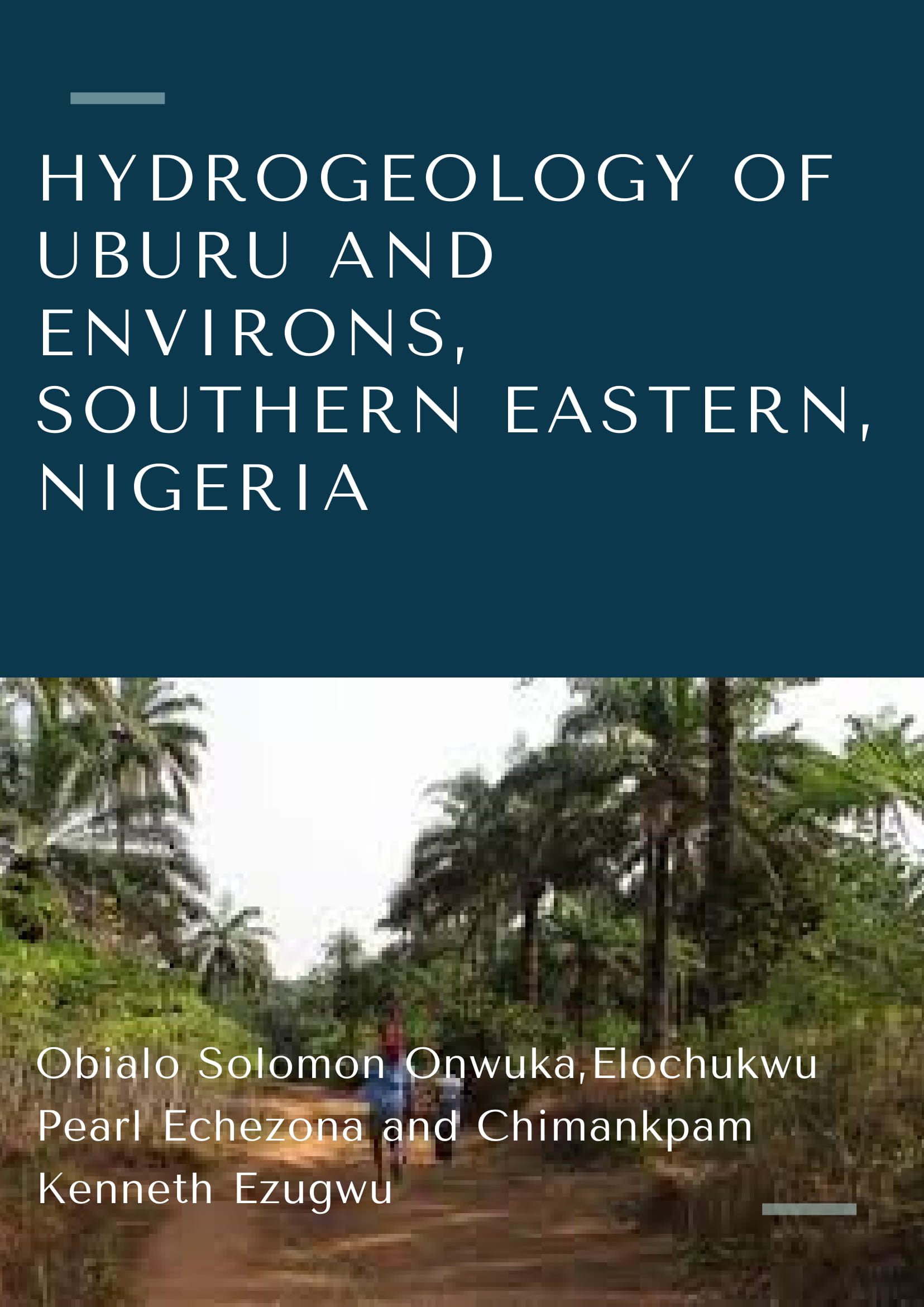Hydrogeology of Uburu and Environs, Southern Eastern, Nigeria
Keywords:
Bacteriological parameter, faucal matter, shales, salt water IntrusionAbstract
Uburu is a rural settlement bounded within latitudes 6˚ 00’N and 6˚ 05’N, and longitudes 7˚ 40’E and 7˚ 45’E. Water quality in Uburu area of southeastern Nigeria was investigated, applying multivariate Statgraphics Centurion XVII, ArcGIS 10.2.2 and Surfer 10 software on hydrochemical and bacteriological data. 10 water samples, ranging from boreholes, hand dug wells and surface waters were collected, to unravel the major factor controlling water quality in the study area. The study area is underlain by Abakaliki Shale, which comprises bluish grey shales with fine to medium to coarse grained sandstones. Physico-chemical and bacteriological analyses were used to assess the influence of geogenic and anthropogenic processes on the groundwater quality. Results suggest that the groundwater is acidic, hard and salty, due to salt water intrusion in the Uburu area. The water types are mainly Na++K+ and S042- Cl–. According to the W.H.O (2017) standards, the levels of the physico-chemical parameters in the groundwater indicate that the water is acceptable for domestic use; but the bacteriological analysis shows high counts of Escherichia coliform (E.coli) bacteria, which indicates poor sanitary conditions in the study area. It will be safe, therefore, to suggest that the water be treated before it is used for drinking and preparation of food, in order to avoid incidences of gastrointestinal diseases caused by the ingestion of water contaminated by faecal matters. The groundwater and surface water cluster analysis unraveled that rock mineral dissolution, sewage and agricultural waste contaminations, are the main factors controlling the water chemistry in the area

Downloads
Published
Issue
Section
Similar Articles
- Olumuyiwa O. Akintola , Investigation of the Safe Location for Private Electric Power Generators Servicing Residential Buildings in Nigeria , Communication In Physical Sciences: Vol. 9 No. 4 (2023): VOLUME 9 ISSUE 4
- Y. Buhari, A review on the prevalence of Human Giardiasis in some selected States in Nigeria , Communication In Physical Sciences: Vol. 5 No. 1 (2020): VOLUME 5 ISSUE 1
- Anduang Ofuo Odiongenyi, Influence of Sol Gel Conversion on the Adsorption Capacity of Crab Shell for the Removal of Crystal Violet from Aqueous Solution , Communication In Physical Sciences: Vol. 8 No. 1 (2022): VOLUME 8 ISSUE 1
- Eneni Roberts Inala, Okpo Esio Unanaonwi, Species- Specific- Pathogens of Selected Forest Trees in Tropical Secondary Moist Forest of Otuoke, Nigeria , Communication In Physical Sciences: Vol. 8 No. 4 (2022): VOLUME 8 ISSUE 4
- Bako Myek, Spectrophotometric Investigation of the Redox Reaction of Acid Green 1 with Periodate Ion in Aqueous Acid: Kinetics and Mechanistic Approach , Communication In Physical Sciences: Vol. 10 No. 2 (2023): VOLUME 10 ISSUE 2
- Ifeoma Chikamma Okereke , Peace Nwagor, Chidinma Olunkwa, Amadi Innocent Uchenna, Analytical Solution on Stochastic Systems to Assess the Wealth Function of Periodic Corporate Investors , Communication In Physical Sciences: Vol. 12 No. 4 (2025): VOLUME1 2 ISSUE 4
- 1. Anthony I. G. Ekedegwa, Evans Ashiegwuike, Enhanced Firefly Algorithm Inspired by Cell Communication Mechanism and Genetic Algorithm for Short-Term Electricity Load Forecasting , Communication In Physical Sciences: Vol. 12 No. 3 (2025): VOLUME 12 ISSUE 3
- Akeem B. Disu, Emmanuel Omokhuale, Effects of Injection and Heat Sink/Source on Convective Kuvshinki Fluid through a Porous Medium , Communication In Physical Sciences: Vol. 8 No. 2 (2022): VOLUME 8 ISSUE 2
- Nyeneime William Akpanudo, Ojeyemi Matthew Olabemiwo, Pore Parameters Analysis of Echinochloa pyramidalis leaf Dopped Silver Nanoparticles , Communication In Physical Sciences: Vol. 11 No. 4 (2024): VOLUME 11 ISSUE 4
- E. Danladi, The Effect of Glass–Kevlar 49 Fibre Loading on the Mechanical, Thermal and Physical Properties of Polypropylene Hybrid Composites , Communication In Physical Sciences: Vol. 5 No. 2 (2020): VOLUME 5 ISSUE 2
You may also start an advanced similarity search for this article.



